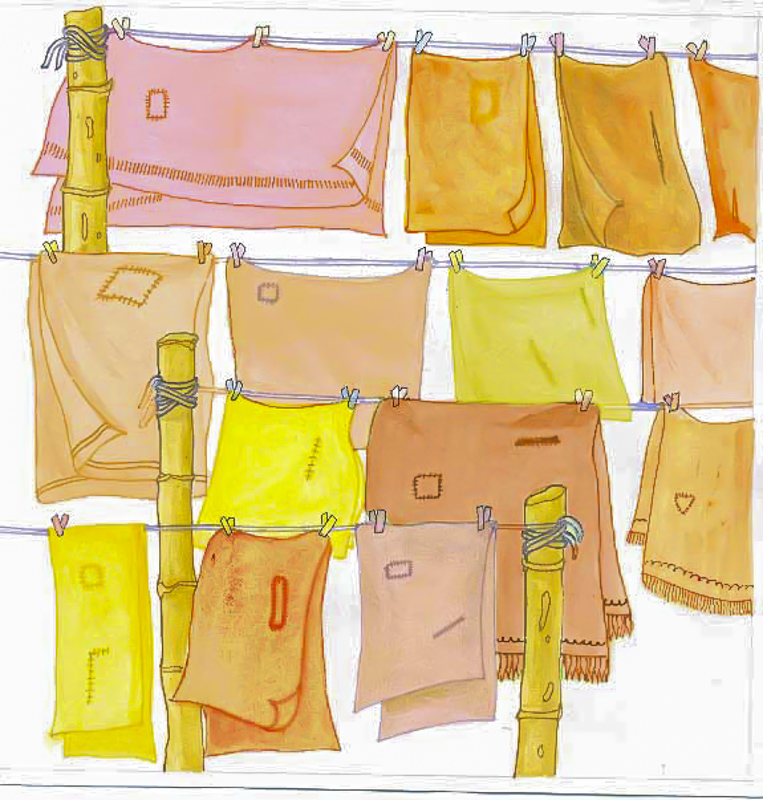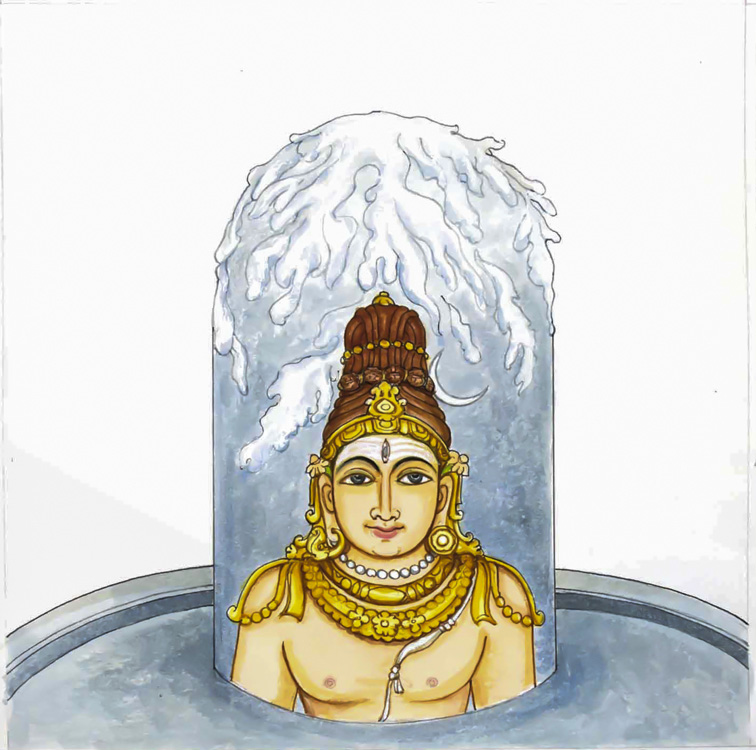Pillar Three
Artwork by A. Manivelu
Top

NORTH FACE:
ChebulicChebulic Myrobalan is a tree in the Combretaceae family, found wild in the forests of India and surrounding countries at high altitudes. It produces a fruit known as a myrobalan which has many medicinal uses.

EAST FACE:
Nandi, Siva's MountNandi is the bull on which Siva rides. His name means “joyful one.” Though powerful, he kneels humbly in front of Iraivan Temple, ever at the feet of his Lord, Siva.

SOUTH FACE:
SadasivaSadasiva, meaning Ever Graceful, is a form of God Siva with five heads and ten arms. In Saiva Siddhanta it is one of the most significant images, full of mystic meanings. The five faces also appear in the niches of the vimanam of this temple.

WEST FACE:
ChampakaHere is the leaf and flower of the golden champa (Michelia). Its fragrance makes it valuable for offerings, women’s hair ornaments, incense and perfumes. We have several trees here at the monastery.
1 of 4
Middle

NORTH FACE:
NooseThe noose, called pasu, signifies control and is used by the Deities to rein in the instinctive mind, to give us control.

EAST FACE:
Monk's RobesHere we see the monks’ clothesline, with their khadi-kavi robes, hand spun and hand loomed, drying in the Hawaiian sun.

SOUTH FACE:
Monk's EarringThe traditional earrings, kundala, are shown here.

WEST FACE:
Holy AshSacred ash, vibhuti, is used to mark parts of the body, a symbol of Saivism. Pujaris will carefully make these three-line markings each day.
1 of 4
Bottom

NORTH FACE:
Siva LingodbhavaThis is the form of Siva known as Lingodbhava, with His face carved in the stone Lingam.

EAST FACE:
Siva RishiThis is a traditional form of God Siva as Siva Rishi
1 of 2
